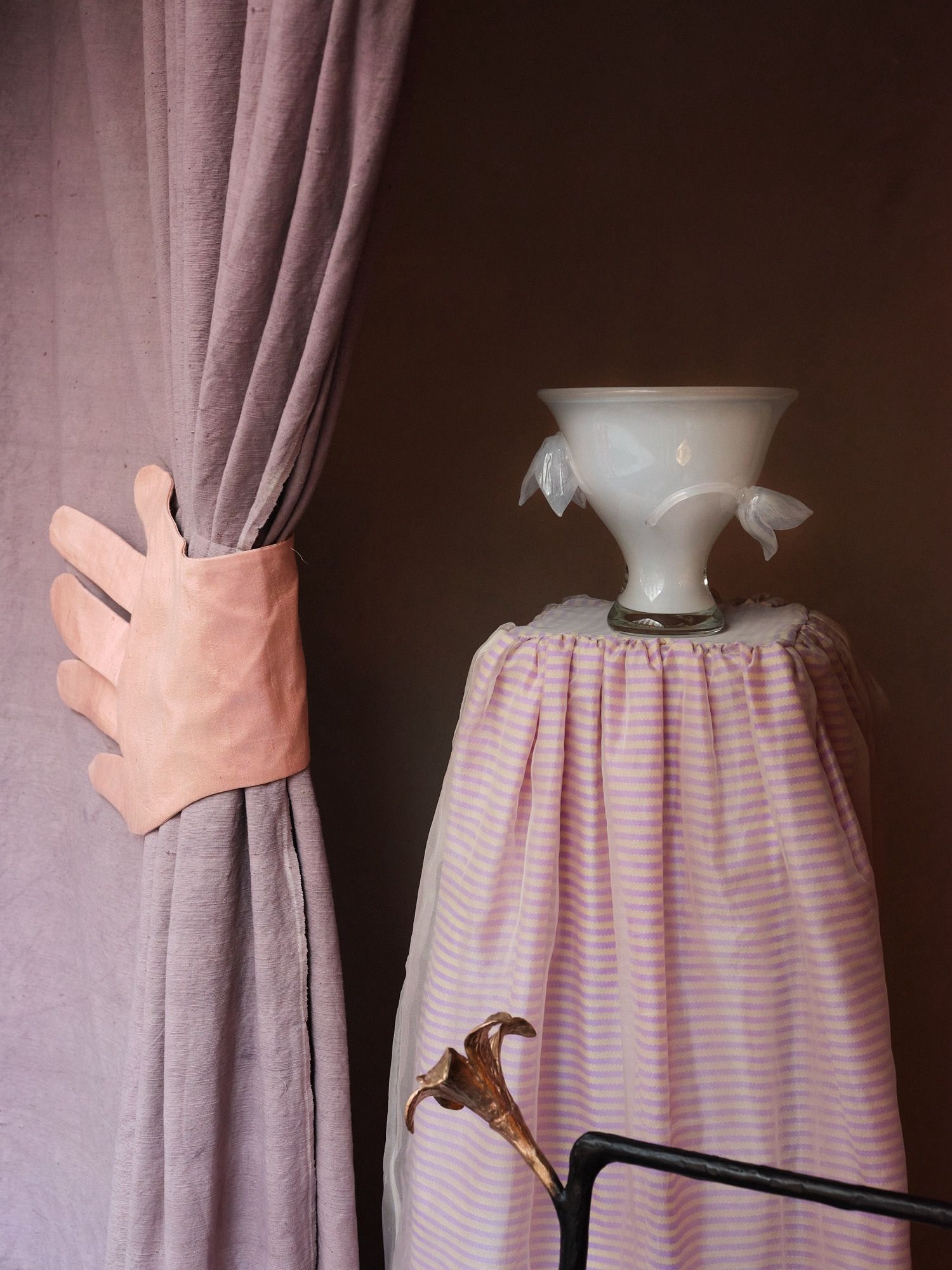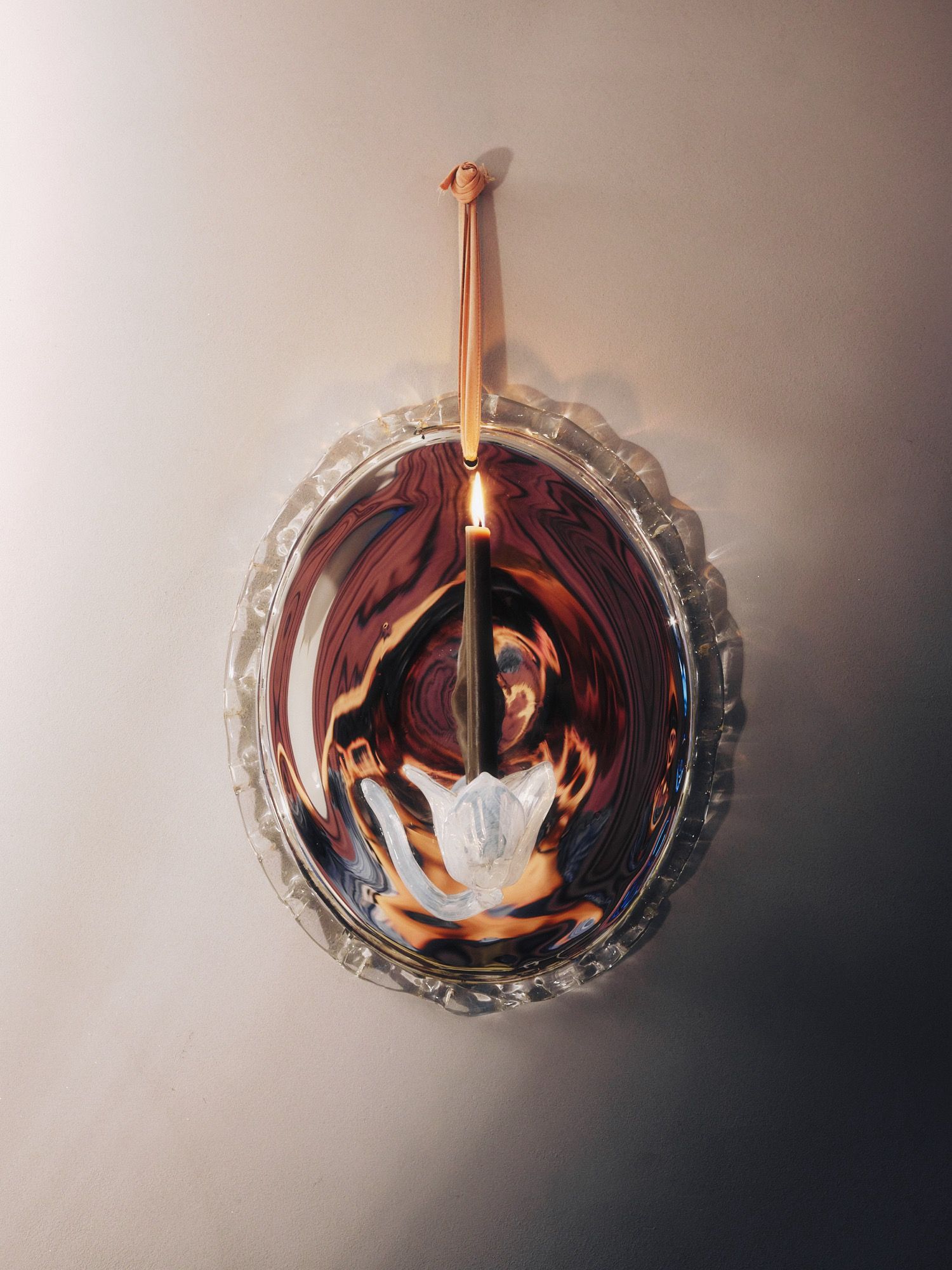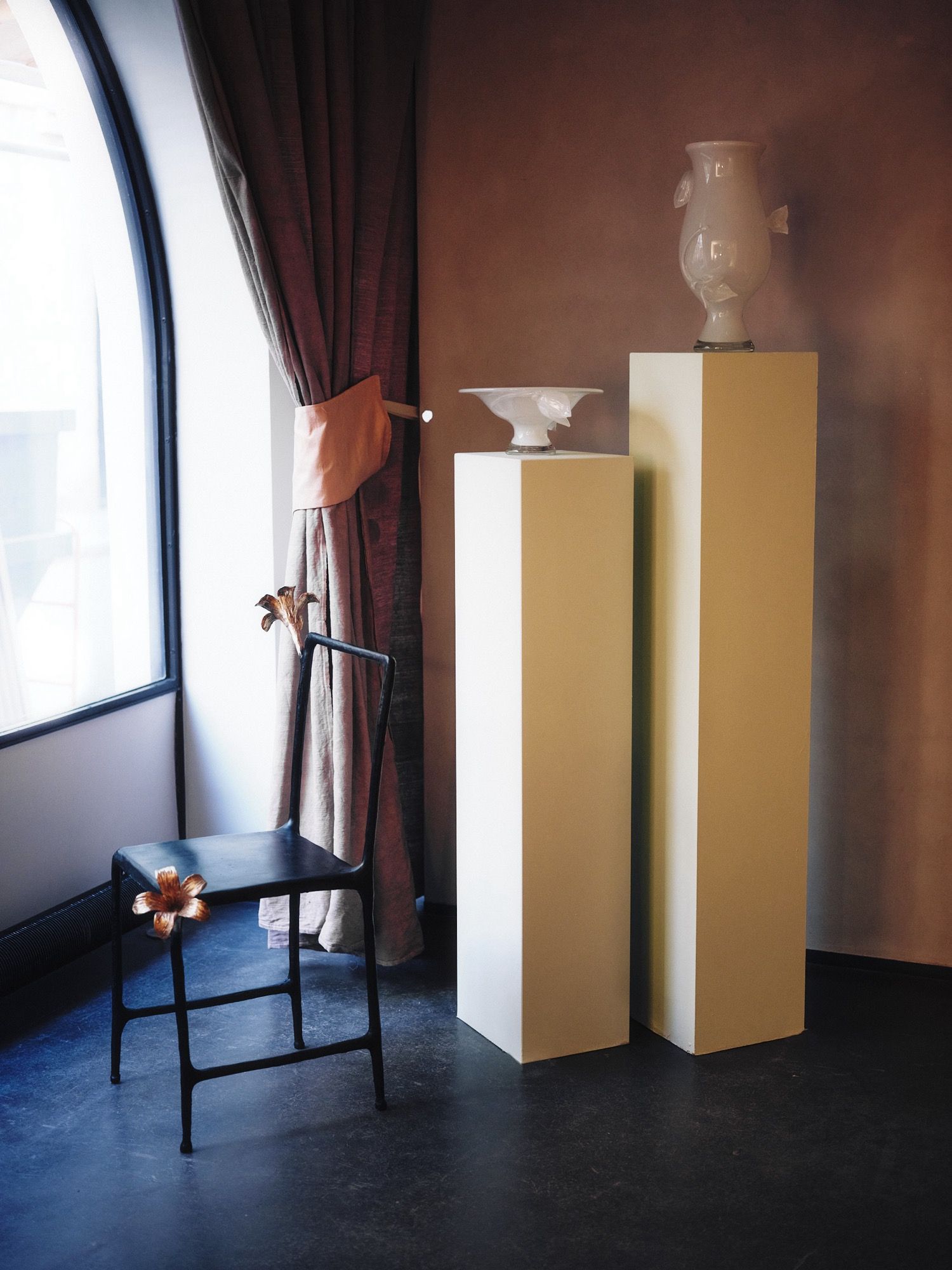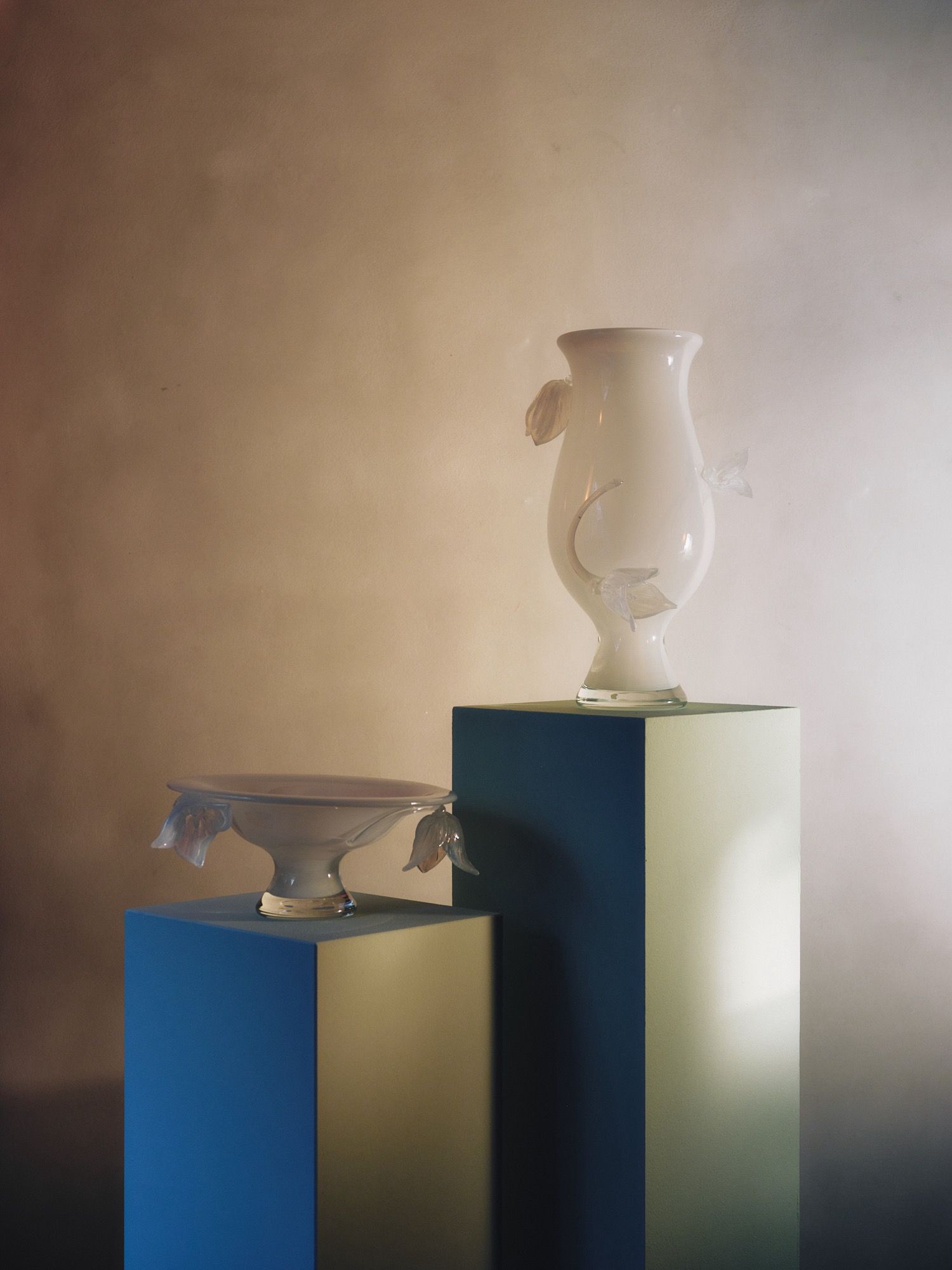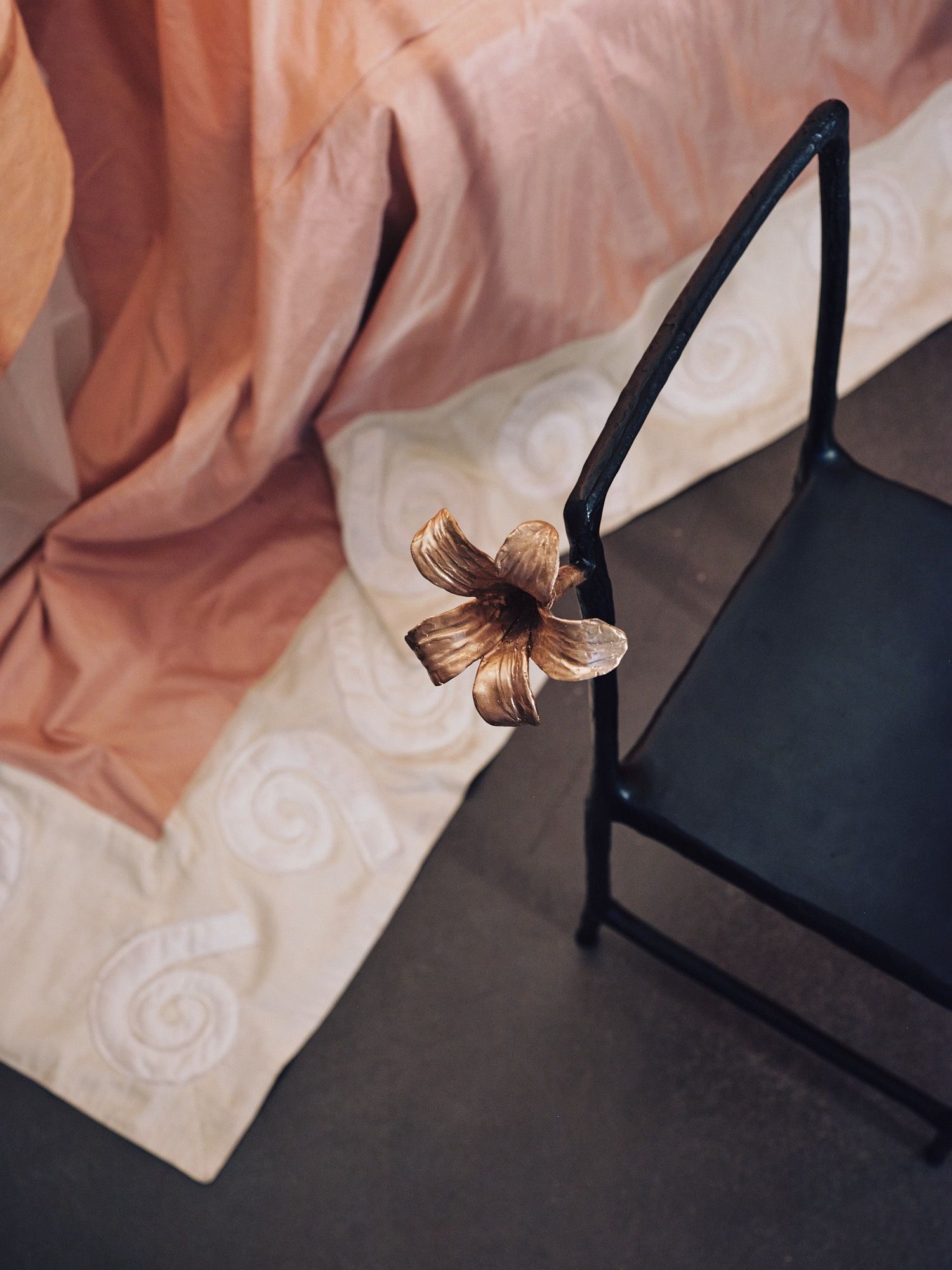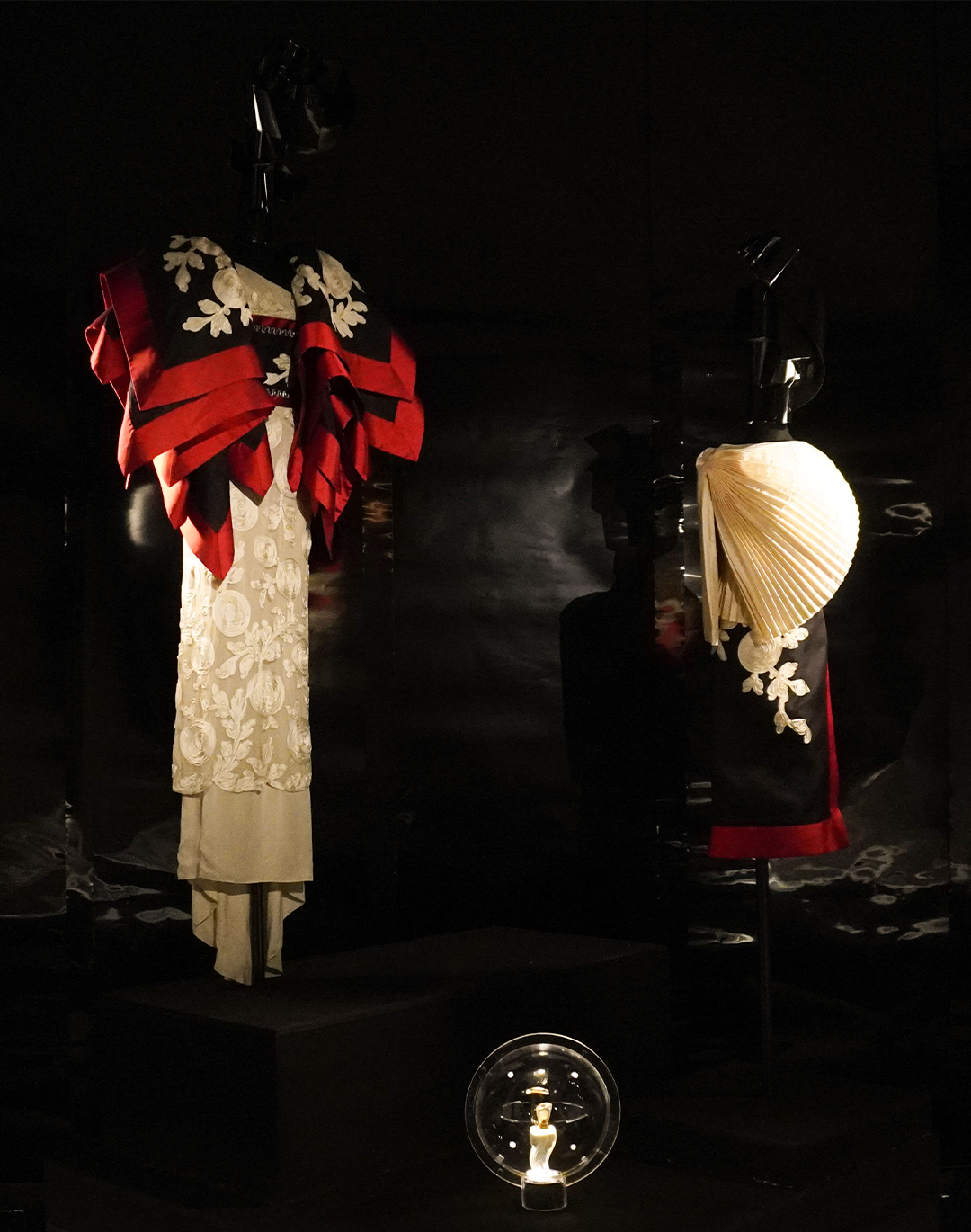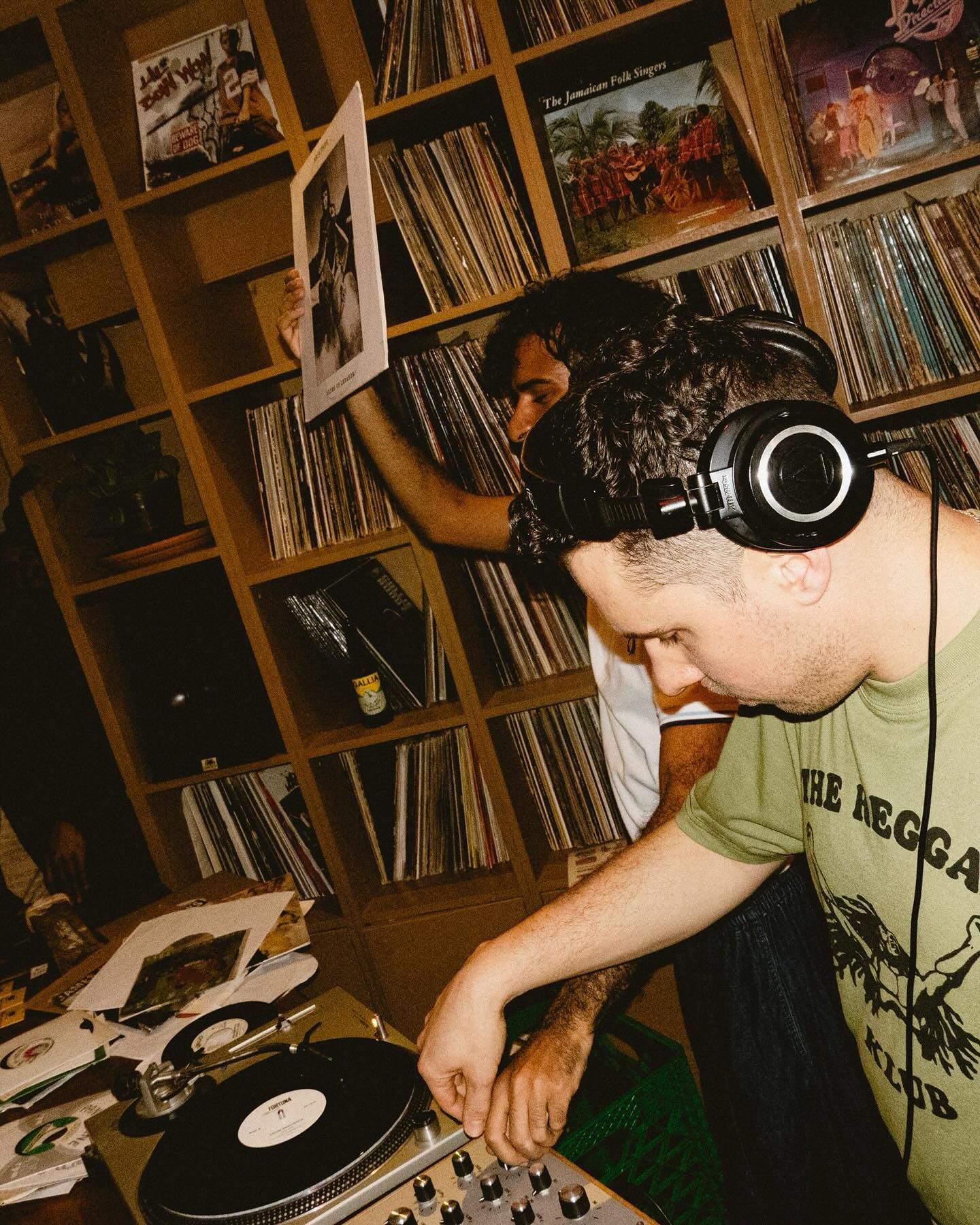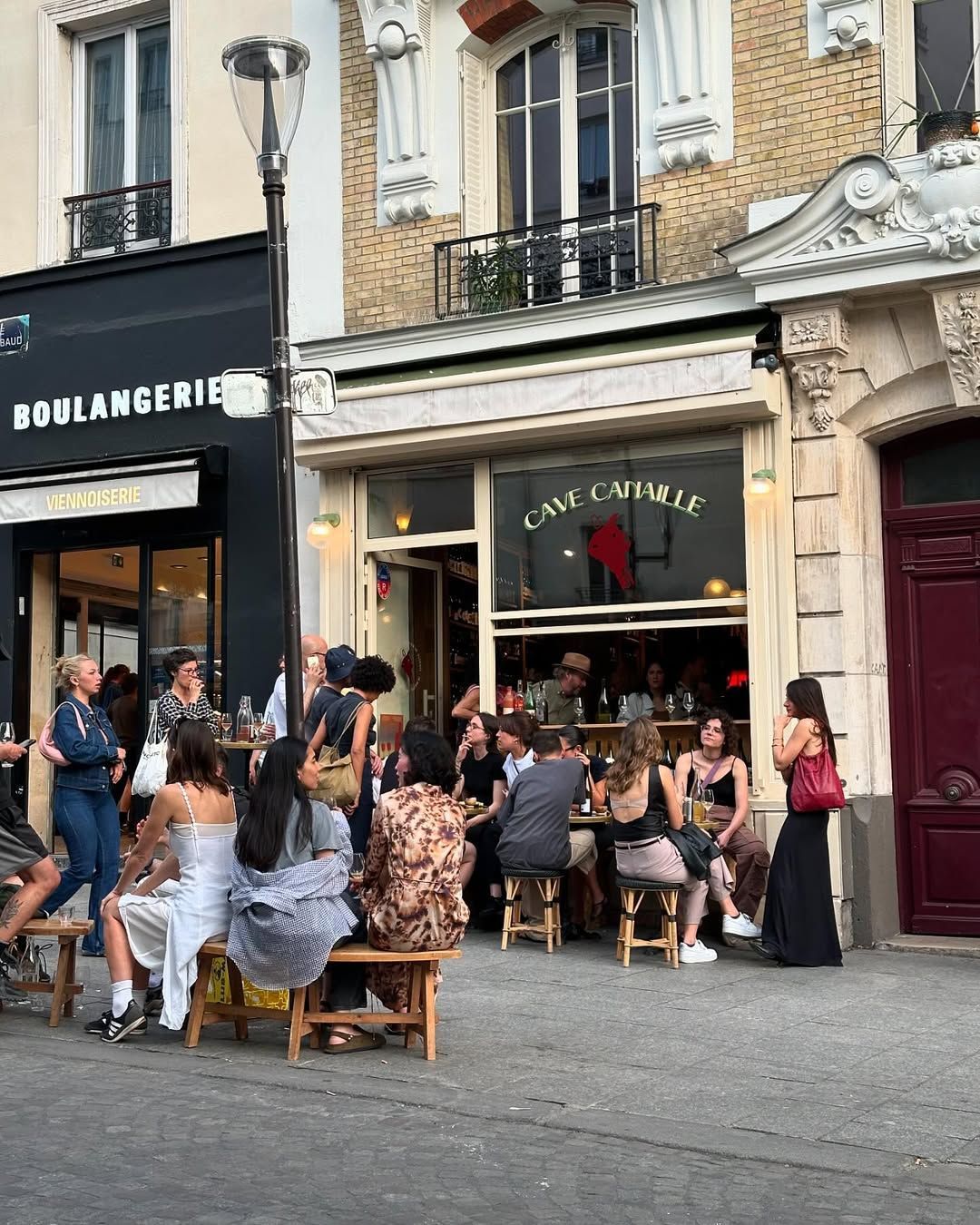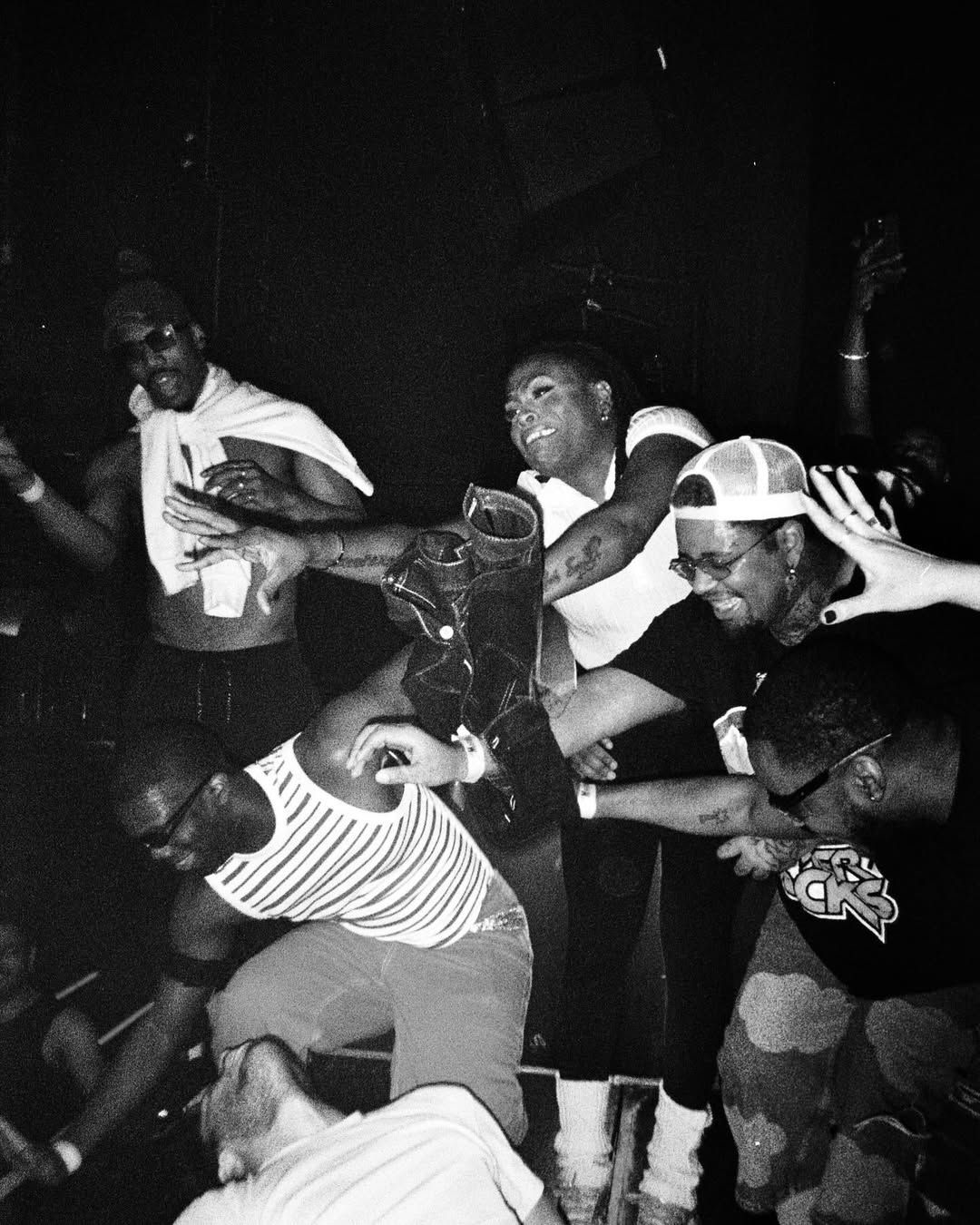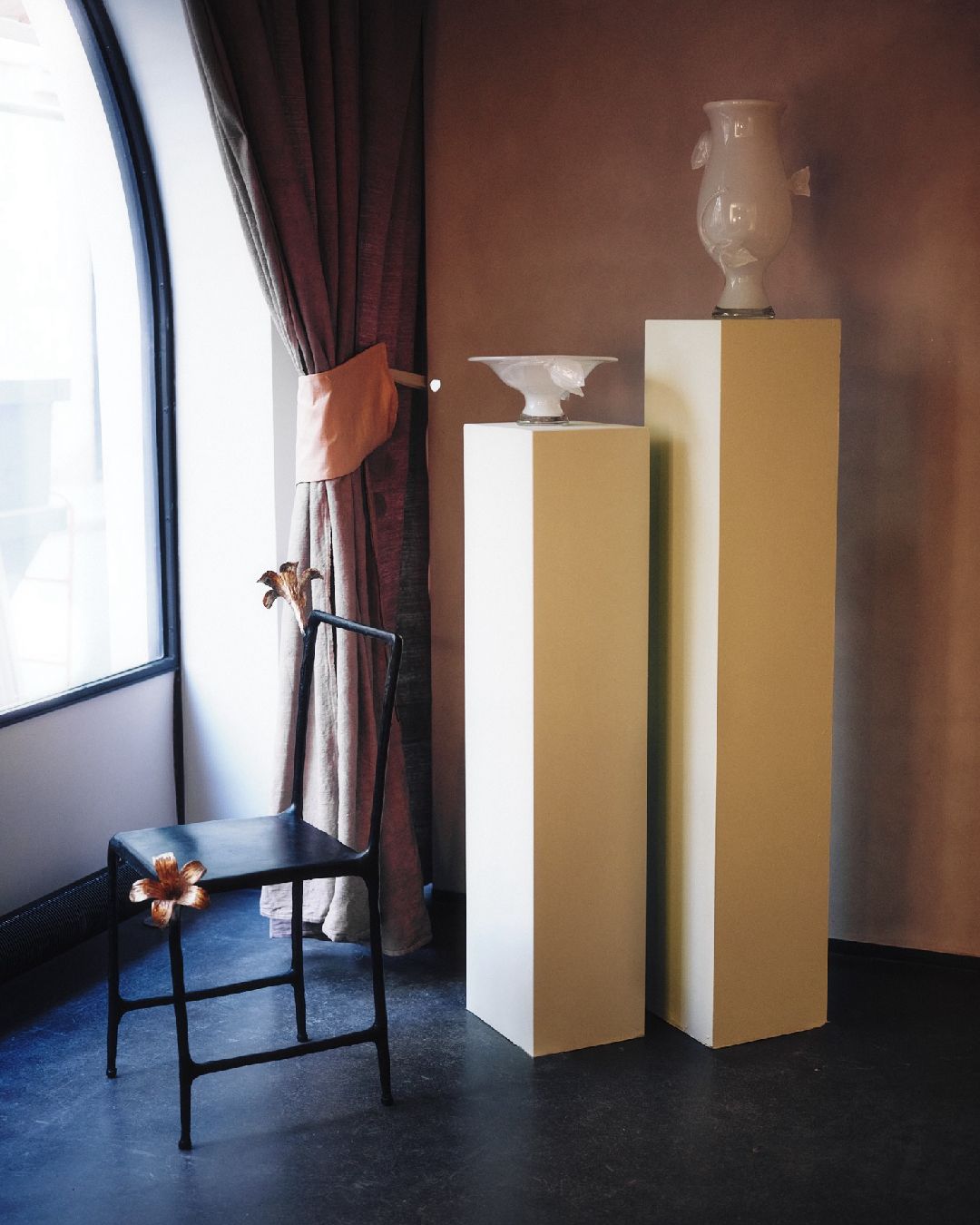
«Creating a relationship of mutual respect between objects and humans» An interview with Sophie Lou Jacobsen
This autumn, as part of the Contributions design fair, Franco-American multidisciplinary artist Sophie Lou Jacobsen inaugurated her first exhibition in Paris, titled Here Between it All. An artistic study initiated in 2019 in New York, the artist's place of residence, Jacobsen's work explores everyday objects by imbuing them with a nostalgic sentiment, starting from her French roots. Jacobsen explores the design surrounding people by harnessing the transformative power of glass and ceramics to convey human emotion. Her works observe how an object can influence a person's emotions, alternating the psychophysical state while remaining inert. It is the form and function that give them life, aspects that create a poetic connection between humans and matter. The exact moment when an object's experience becomes a ritual, the moment a person begins to respect a tool is Jacobsen's main focus and the overarching theme of her first exhibition that we had the opportunity to discuss with her.
A notion that has fascinated Jacobsen for some time is “L’art de la Table”, an aspect of French tradition that has allowed the artist to find a meeting point between her production and her French roots. From table setting to the tasting and sharing experience, the French meal has a touch of ritualistic quality. «With that in mind, all of my objects are centered around simple, daily acts of pleasure – eating, drinking, serving, arranging flowers, hosting,» explains Jacobsen. «Furthermore, I tend to reference historical artifacts and design objects in order to understand each object’s sociological and environmental context.» Inspiring her work, the artist explains, are movements like Art Nouveau and the nature-themed glassware of the École de Nancy, which inspired the Bouquet glass collection. Glass, Jacobsen reveals, represents a mutable and multifaceted element, not only because it changes color and shape, but also because in each of our lives, it plays both the role of a functional object and a design element. It serves more than one purpose. «Glass offers an endless amount of possibilities when it comes to form and color, and with every new process I have the chance to try a whole new world of experimentation,» explains Jacobsen. «I also enjoy the high/low possibilities afforded by the material and it's processes. .»
Just as a work of art can evoke disruptive feelings in the observer's emotional state, common objects can influence the mind of the person interacting with them. « I believe that objects possess an innate energy that can have a strong effect on our lives,» explains Jacobsen regarding her works. «By creating an emotional response, I believe we can create a relationship of mutual respect between objects and humans, based on attention, thoughtful-ness and care.» For the artist, the production that has best embodied this intention over the years is the Ripple Cup, one of the first projects launched by her studio. «Form and function seemlessly blend together in a way that doesn't feel obvious in either direction – it's a small, multi functional form that its a delight to hold and use.» In addition to paying attention to Art Nouveau, which inspires her collections, Jacobsen looks to Modernism and Postmodernism. More specifically, in recent times, she has found rich inspiration in ornamental art. «I've recently been inspired by Old World motifs and the notion of "Romantic Grandeur." Sottsass, Scarpa and Hoffman (amongst many others) are big sources of inspiration, as well as traditional craftsmanship.»
Jacobsen's new exhibition, Here Between It All, is part of the Parisian design fair Contributions, a significant milestone in the young artist's career. An immersive and conceptual exhibition showcasing Jacobsen's latest works, Here Between It All explores common forms, such as vases and mirror appliques, through a contemporary lens. Alongside her were ZN ALI, a London-based fabric brand, Conie Vallese, an Argentine author of metal furniture and objects, and chef Caro Diario with a creative culinary installation. «John Everett Mallais’ iconic Ophelia painting served as an inspiration,» Jacobsen added regarding her exhibition. «The space reflected the Victorian interest in beauty, death, the "language of flowers" and the delicate balance between fragility and resilience that exists in both the natural world and human experience.»










































